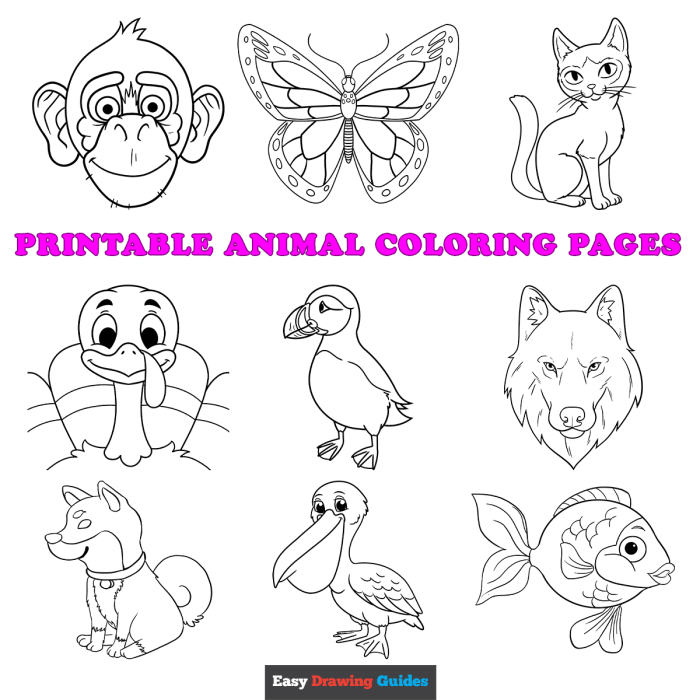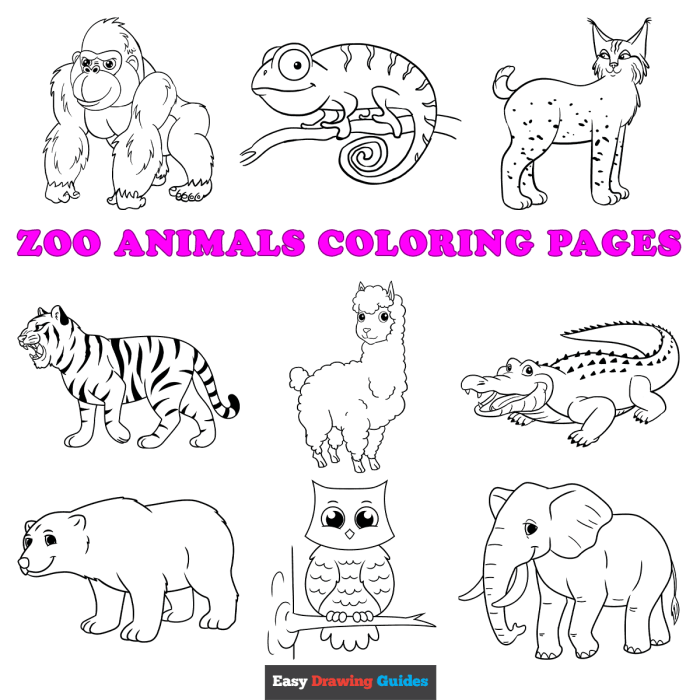Popularity and Trends of “Feeding Animals Coloring Pictures”

Coloring pages featuring animals have long been a staple in children’s entertainment, and the sub-theme of “feeding animals” holds a specific appeal, reflecting children’s natural curiosity about animal care and their developing understanding of the natural world. This theme taps into a child’s inherent desire to nurture and care for others, even extending it to the animal kingdom.The popularity of “feeding animals coloring pictures” is intertwined with broader trends in children’s coloring book themes.
While fantastical creatures and popular characters remain strong contenders, realistic depictions of animals, particularly those found in farms, zoos, or children’s own backyards, continue to hold significant appeal. The act of coloring these images provides a tangible connection to the animal world, fostering creativity and a sense of responsibility.
Age Groups Interested in Feeding Animals Coloring Pages
Children aged 3 to 8 years old show the strongest interest in coloring pages depicting animals being fed. This age range aligns with a child’s developing fine motor skills and their increasing ability to focus on detailed tasks. Younger children (3-5) may enjoy simpler images of animals with clearly defined areas for coloring, while older children (6-8) might appreciate more intricate designs featuring a wider variety of animals and feeding scenarios.
The thematic element of caring for animals resonates particularly well within this age group, as it coincides with their expanding understanding of empathy and responsibility.
Comparison to Other Animal-Related Coloring Book Themes
While “feeding animals” is a niche theme within the broader category of animal coloring pages, its popularity is comparable to other realistic animal themes, such as farm animals, zoo animals, or pets. Thematic coloring books featuring specific animal habitats or ecosystems also enjoy significant popularity. However, the “feeding animals” theme offers a unique interactive element, allowing children to engage with the image on a deeper level by imagining the act of providing food and care for the animals depicted.
The success of this theme often hinges on the quality of the artwork – appealing, realistic depictions of both animals and food items are crucial for its appeal.
Online Search Frequency Data for “Feeding Animals Coloring Pictures”
Precise data on the frequency of online searches for “feeding animals coloring pictures” is difficult to obtain without access to proprietary search engine data. However, anecdotal evidence from various online coloring page resources and the presence of numerous websites and blogs dedicated to printable coloring pages featuring this theme suggest a consistent and moderately high level of interest. The search volume likely fluctuates seasonally, potentially peaking during periods when children are more likely to be engaged in coloring activities, such as school holidays or during times of inclement weather.
The search volume is likely also influenced by trends in online content creation and the popularity of related themes like animal care and environmental awareness. Further research utilizing analysis tools would be necessary for a more precise quantitative assessment.
Types of Animals Featured in “Feeding Animals Coloring Pictures”

Coloring pages depicting animals being fed offer a delightful blend of education and entertainment. They provide children with opportunities to learn about different animals, their diets, and their habitats, all while engaging in a creative activity. The variety of animals represented caters to diverse interests and learning styles, making these coloring pages a versatile educational tool.The selection of animals featured in “Feeding Animals Coloring Pictures” is quite broad, encompassing a range of species from various habitats and with diverse dietary needs.
These pages often prioritize animals familiar to children, making the learning process more engaging and accessible. Illustrations typically emphasize the interaction between the animal and its food, highlighting key characteristics of both.
Animal Categories and Feeding Scenarios
These coloring pages commonly feature a range of animals, categorized broadly by their diet and habitat. Illustrations frequently showcase animals in naturalistic settings, emphasizing the interaction between the animal and its food source.
- Farm Animals: Cows, pigs, sheep, chickens, horses. These are often depicted eating hay, grain, or other feed in barns or pastures. Illustrations typically show these animals with soft, rounded features, often with simple color palettes. Cows are frequently shown with large, gentle eyes and a calm demeanor. Pigs might be depicted rolling in mud, while chickens are often busy pecking at the ground.
- Wild Animals: Lions, tigers, bears, elephants, giraffes, zebras. These animals are often shown in more vibrant settings, such as savannas or jungles. Feeding scenarios might include a lion eating a carcass, a bear fishing for salmon, or a giraffe reaching for leaves high in a tree. Illustrations tend to emphasize the animals’ unique features, like a lion’s mane or a giraffe’s long neck.
Color palettes are often bolder and more varied than those used for farm animals.
- Pets: Dogs, cats, rabbits, birds. These animals are typically depicted in more domestic settings, such as homes or yards. Dogs might be shown eating dog food from a bowl, while cats might be depicted lapping milk or chasing after a mouse. Rabbits often nibble on carrots, and birds might be shown eating seeds or worms. Illustrations tend to be softer and more cuddly, emphasizing the animals’ cuteness.
- Aquatic Animals: Fish, dolphins, whales, sea turtles. These animals are often depicted in underwater settings, feeding on various aquatic life. Fish might be shown eating smaller fish or algae, while dolphins and whales might be depicted feeding on schools of fish or squid. Sea turtles are often shown munching on seaweed. Illustrations often emphasize the animals’ sleek, streamlined bodies and bright, vibrant colors.
Animal Diet and Corresponding Food Depiction
The following table summarizes the common animals depicted, categorized by their diet and the food shown in the illustrations.
| Animal | Diet | Food Depicted | Typical Characteristics in Illustrations |
|---|---|---|---|
| Cow | Herbivore | Hay, grass | Large, gentle eyes, calm demeanor, soft, rounded features |
| Lion | Carnivore | Meat, carcass | Muscular body, sharp teeth and claws, powerful build, mane (for males) |
| Bear | Omnivore | Fish, berries, honey | Large size, thick fur, strong claws |
| Rabbit | Herbivore | Carrots, lettuce | Long ears, fluffy tail, small size |
| Dog | Omnivore | Dog food, bones | Varying breeds with unique features, often depicted with wagging tails |
| Pig | Omnivore | Grain, vegetables | Short snout, rounded body, often depicted rolling in mud |
| Giraffe | Herbivore | Leaves, acacia branches | Long neck, long legs, spotted coat |
| Zebra | Herbivore | Grass | Striped coat, long legs |
| Goldfish | Omnivore | Fish flakes, algae | Scaly skin, fins, often depicted swimming |
Feeding animals coloring pictures offer a delightful way to engage children’s creativity. These often depict heartwarming scenes, and for simpler designs, you might find it helpful to check out resources like easy baby animal coloring pages which provide a great starting point for younger artists. Then, you can gradually introduce more complex feeding animal scenes, building their skills and confidence.
